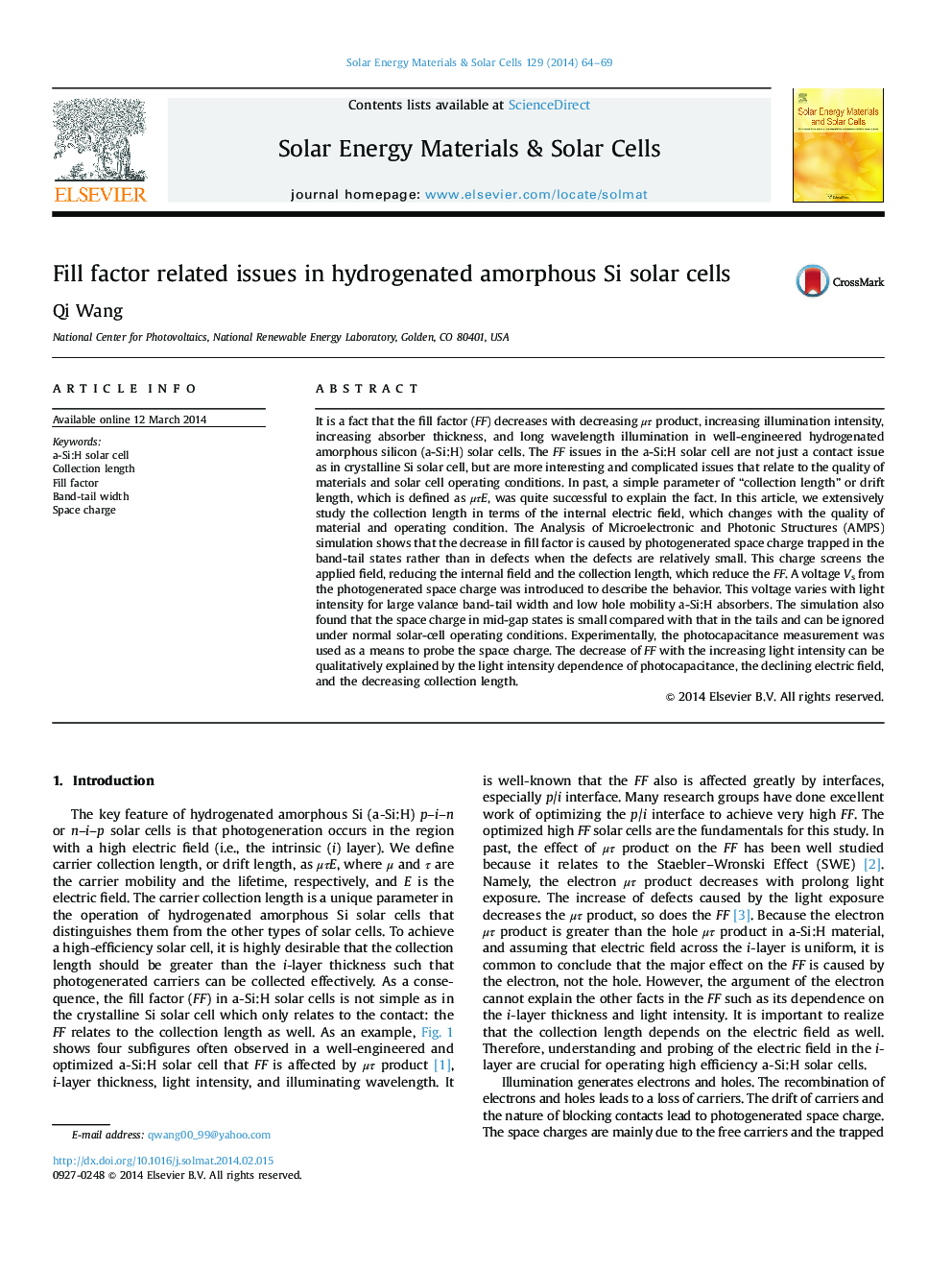| کد مقاله | کد نشریه | سال انتشار | مقاله انگلیسی | نسخه تمام متن |
|---|---|---|---|---|
| 78031 | 49314 | 2014 | 6 صفحه PDF | دانلود رایگان |
• Review FF issues in hydrogenated amorphous Si solar cells.
• Study the electric field changes due to space charge generated from illumination.
• Use collection length as a good parameter to explain the FF issues.
It is a fact that the fill factor (FF) decreases with decreasing μτ product, increasing illumination intensity, increasing absorber thickness, and long wavelength illumination in well-engineered hydrogenated amorphous silicon (a-Si:H) solar cells. The FF issues in the a-Si:H solar cell are not just a contact issue as in crystalline Si solar cell, but are more interesting and complicated issues that relate to the quality of materials and solar cell operating conditions. In past, a simple parameter of “collection length” or drift length, which is defined as μτE, was quite successful to explain the fact. In this article, we extensively study the collection length in terms of the internal electric field, which changes with the quality of material and operating condition. The Analysis of Microelectronic and Photonic Structures (AMPS) simulation shows that the decrease in fill factor is caused by photogenerated space charge trapped in the band-tail states rather than in defects when the defects are relatively small. This charge screens the applied field, reducing the internal field and the collection length, which reduce the FF. A voltage Vs from the photogenerated space charge was introduced to describe the behavior. This voltage varies with light intensity for large valance band-tail width and low hole mobility a-Si:H absorbers. The simulation also found that the space charge in mid-gap states is small compared with that in the tails and can be ignored under normal solar-cell operating conditions. Experimentally, the photocapacitance measurement was used as a means to probe the space charge. The decrease of FF with the increasing light intensity can be qualitatively explained by the light intensity dependence of photocapacitance, the declining electric field, and the decreasing collection length.
Figures (a–d) are the four typical results of FF in a-Si:H solar cell; (a) a function of μτ product, (b) a function of light intensity or Jsc, (c) a function of i-layer thickness, and (d) a function of incident photon energy or wavelength.Figure optionsDownload as PowerPoint slide
Journal: Solar Energy Materials and Solar Cells - Volume 129, October 2014, Pages 64–69
